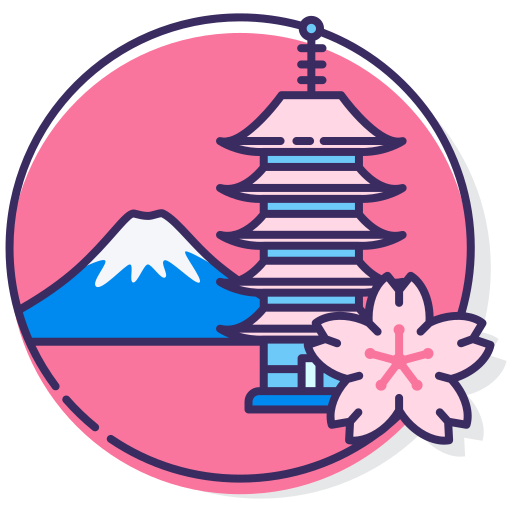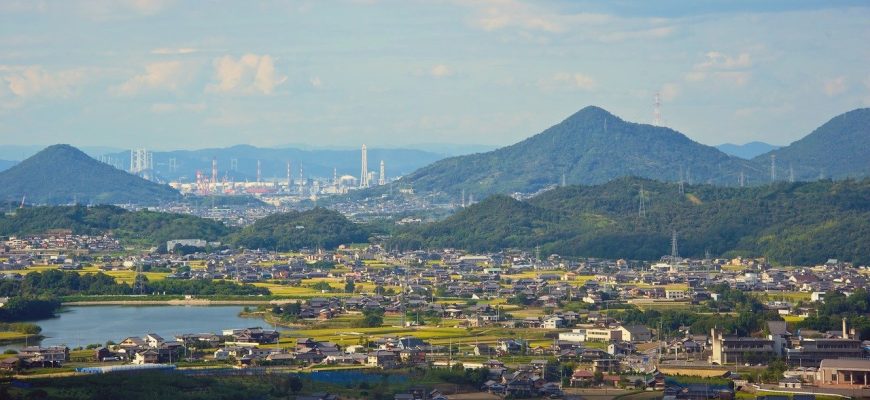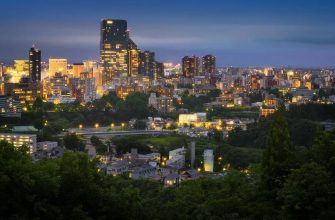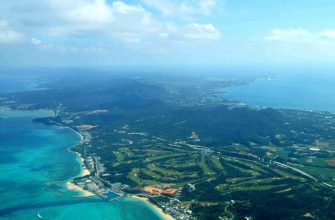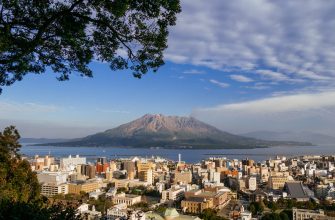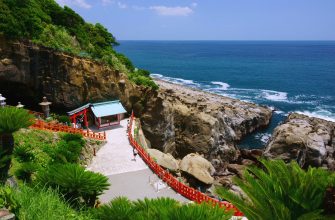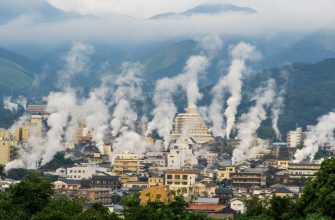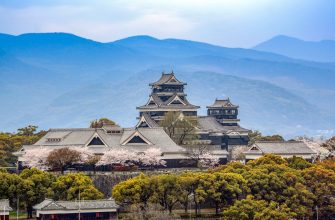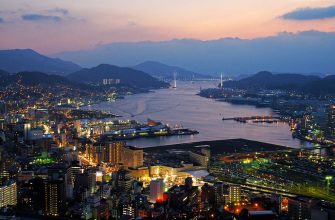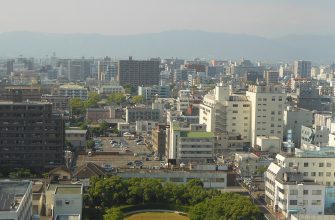Nestled in the north of Shikoku, the quaint Kagawa Prefecture may be the most diminutive in Japan by size but is abundant in cultural and scenic attractions. The picturesque Ritsurin Garden, situated in Takamatsu, offers visitors the tranquility of koi ponds and the elegance of meticulously sculpted landscapes, complete with a traditional teahouse. For those drawn to contemporary art, a trip to Naoshima Island showcases a fusion of innovative modern art pieces set against the backdrop of the island’s natural beauty.
Kagawa’s charm extends to its captivating shorelines where Chichibugahama Beach reveals stunning tide pools that mirror the beauty of the sky, offering a spectacle not to be missed. Whether one’s interest lies in exploring historic landmarks like Marugame Castle, indulging in the local culinary scene, or seeking out unique island adventures in Teshima, Kagawa provides a comprehensive tapestry of experiences. Visitors can enrich their Japanese sojourn through a diverse range of activities that promise a meaningful connection with this charming corner of Japan.
Journeying to Kagawa
Traveling from Tokyo
- By Air: Fly from Haneda Airport directly to Takamatsu Airport in approximately 1 hour and 20 minutes.
- By Rail: Board the Shinkansen to Okayama, then switch to a local train for Kagawa. Total journey time is about 4 hours.
Arrival from Osaka and Kyoto
- By Train: Depart from Shin-Osaka Station or Kyoto Station on a shinkansen to Okayama, followed by a local train to Kagawa. Travel time ranges from 2 to 3 hours.
Accessing from Hiroshima
- By Bullet Train: Take a shinkansen from Hiroshima Station to Okayama and change to a local train for Kagawa, reaching in approximately 2 hours.
Crossing by Ferry
- Sea Voyage: Utilize ferry services from various ports across Japan to Kagawa. A notable route is from Osaka to Takamatsu, with a journey time of roughly 4 hours, traversing the Seto Inland Sea.
Approaching by Bus
- Long-Distance Coach: Catch a bus from major cities like Tokyo, which will take you to Takamatsu in about 12 hours.
The options incorporate Japan’s efficient public transportation systems, including the renowned bullet trains, and offer a scenic boat ride for visitors across the calm waters of the Seto Inland Sea.
Discovering Takamatsu’s Heritage and Nature
Historical Fortress of Takamatsu
Takamatsu Castle, historically known as Tamamo Castle, stands as a testament to the city’s storied past. Constructed in the 1500s, it not only promises a journey through the bygone era of samurais and shoguns but also serves as a vantage point offering panoramic views that encompass the modern cityscape against a backdrop of mountains.
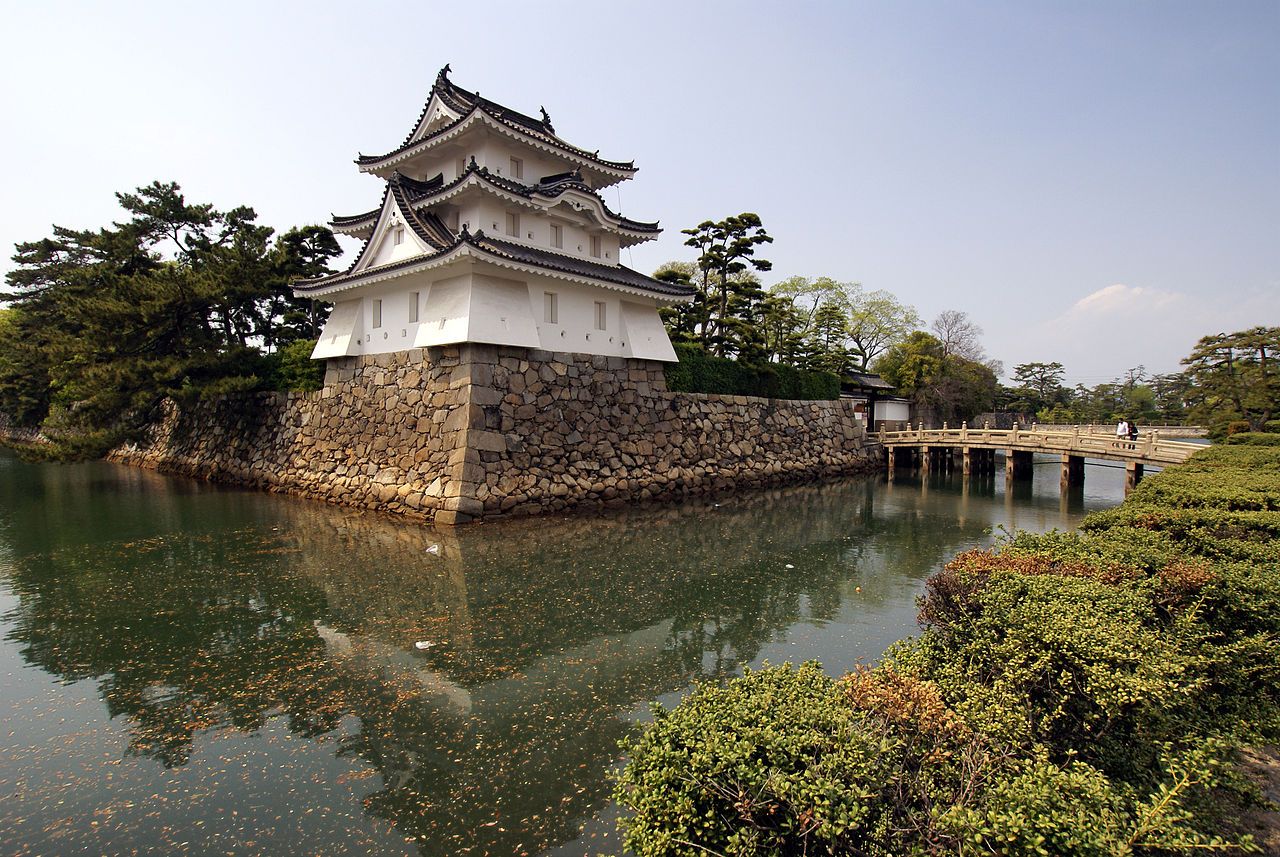
- Founding Era: 16th Century
- Highlights: Feudal architecture, scenic vistas
Serenity at Ritsurin
Amid Takamatsu’s vigor lies Ritsurin Park, a tranquil haven characterized by exceptional landscape design. With roots as a traditional Japanese garden, Ritsurin is adorned with thriving ponds and multiple tea houses that anchor its charm, providing an idyllic setting to appreciate the changes brought by the autumn hues.

- Main Attractions: Large ponds, historic tea houses
- Seasonal Beauty: Vibrant autumn colors
Ascending Yashima
Set off for an encompassing adventure at Yashima, a mountain replete with natural trails and historical nuggets such as the revered Yashima Temple. Not only can one hike for a rewarding experience, but the option of a tram ride to the summit makes it accessible for panoramic spectacles of the region.

- Activities: Hiking, exploring historical sites
- Transportation: Tram availability to the summit
Urban Explorations
Takamatsu brims with various Urban Parks and Historical Monuments beyond its natural retreats. The contemporary Sunport Takamatsu offers seaside promenades, while the architectural marvel of the Kagawa Prefectural Gymnasium reflects Kenzo Tange’s design prowess.

- Sunport Takamatsu: Waterfront leisure spot
- Kagawa Prefectural Gymnasium: Architectural ingenuity by Kenzo Tange
Artistic Journey in Naoshima
Discover the heartbeat of Japan’s creative spirit on Naoshima Island, a spectacular nexus for contemporary art enthusiasts. This locale is renowned for its fusion of nature with the creativity of human ingenuity.

- Benesse House stands as a hallmark of aesthetic excellence amidst the island’s scenery, boasting an extensive collection of modern art and architecture.
- Uncover the whimsical beauty of Yayoi Kusama’s iconic Red Pumpkin and Yellow Pumpkin, symbols of the island’s artistic soul.
- Traverse the transformative spaces within the Art House Project, where abandoned residences reincarnate as eclectic art installations, each bearing an artist’s unique touch.
- Immerse in the serene ambiance of the Chichu Art Museum and other distinguished art galleries.
- Witness the brilliant architectural prowess of Tadao Ando reflected across the island’s structures, including the theater and multiple museums.
- Every three years, the Setouchi Triennale invigorates the island with an influx of sculptures and installations that beckon art aficionados worldwide.
Naoshima continues to enchant visitors with an artful embrace, melding creative expression with its tranquil coastal backdrop.
Exploring Shodoshima’s Charms
Shodoshima Island, nestled in the tranquil waters of the Seto Inland Sea, offers a tapestry of scenic beauty and cultural experiences. Among its many marvels is the ephemeral Angel Road, a sandbar that allows passage to neighboring isles at low tide.
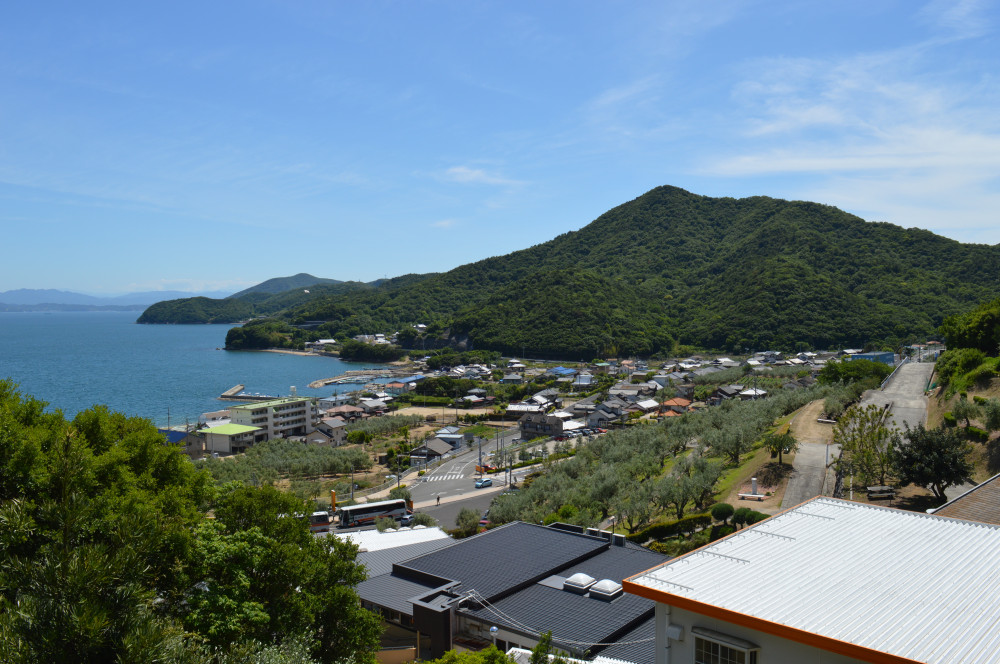
Bold Experiences:
- Angel Road: A temporary path amidst the sea.
- Kankakei Gorge: Over 2,000 trees framing spectacular vistas.
- Shikoku Village: A living museum of traditional Japanese homes.
- Olive Tastings: Indulge in the island’s famed olives at locales like the Nishimura Olive Garden.
For enthusiasts of flora, the Kankakei Gorge is a haven boasting a dense canopy of trees that come alive with a riot of colors in the autumn. Visitors are invited to ascend the gorge by the Kankakei Ropeway, unveiling panoramic views as they glide over the valley.
The island also lays claim to Shikoku Village, where visitors can stroll through a collection of preserved and restored Japanese houses, connecting with the architectural heritage of the region.
Eco-conscious tourists will appreciate the island’s commitment to sustainability showcased through explorations of the windmill park. The journey through Shodoshima’s lush landscapes and commitment to renewable energy simultaneously educates and inspires.
Views and Nature:
- Ascend via cable car for breathtaking views.
- Capture nature’s seasonal ballet of colors.
- Learn about eco-friendly practices at wind turbine installations.
Remember to savor Shodoshima’s renowned olives, which have shaped the island’s identity and culinary reputation.
Visit to Kotohira
Kotohira, affectionately known as Konpira, hosts the revered Kotohira-gu, a Shinto shrine illustrious among seafarers. The Kotohira-gu Shrine recognizes a deity venerated by sailors and fisherfolk across generations.
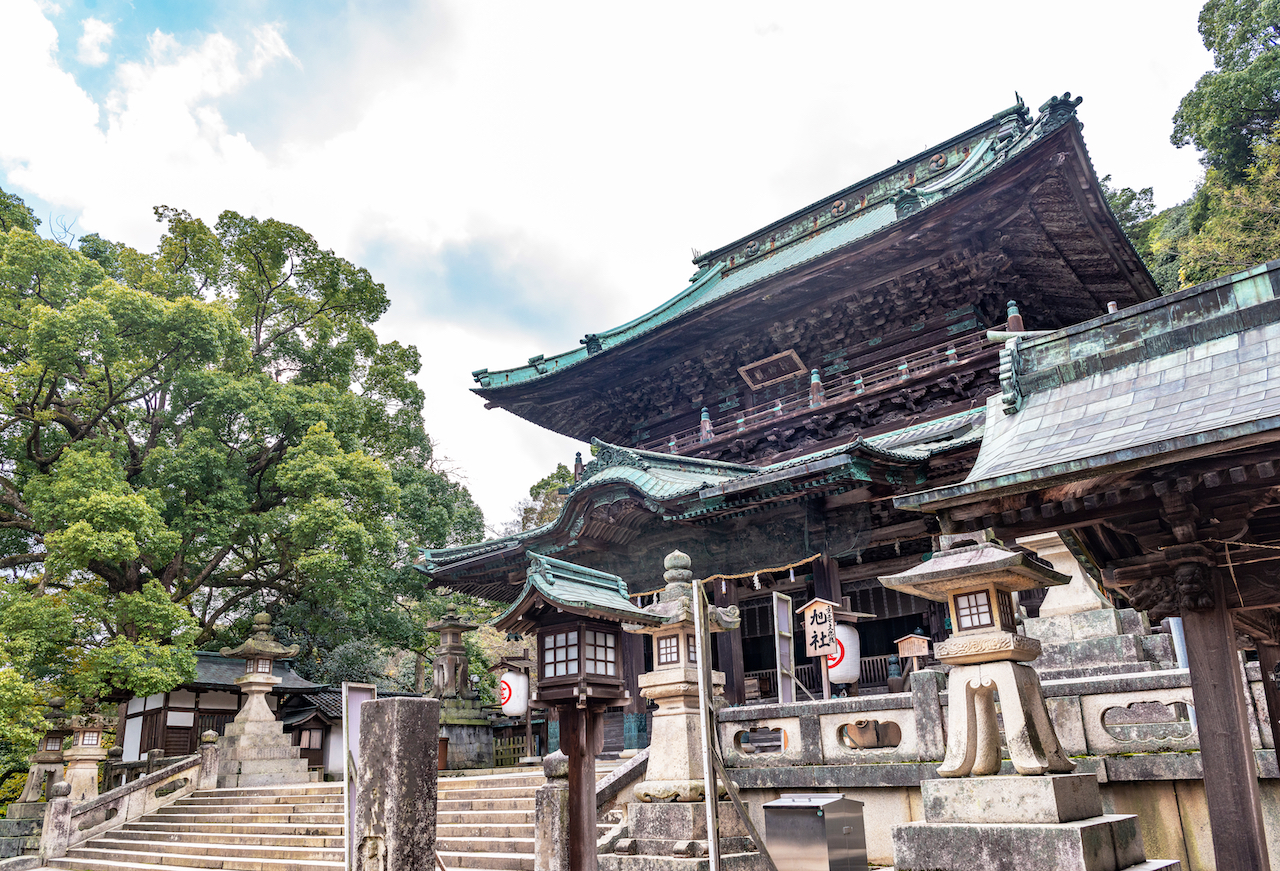
Venturing to the shrine’s main pavilion requires ascending a grand series of 785 stone staircases, a rigorous journey that rewards with a sweeping vista of the Sanuki Plain. The Konpira Shrine, perched atop this climb, presents a dominating and awe-inspiring structure.
Within the shrine’s hallowed precincts, visitors encounter the inner shrine, a sanctum that celebrates Kobo Daishi, the celebrated monk who instituted the Shingon Buddhist tradition. The ambiance here exudes tranquility, offering pilgrims a space for quiet reflection.
Before departing, guests often obtain amulets, which are regarded as tokens of protection and good fortune, emblematic of the shrine’s spiritual significance. Each amulet carries with it the shrine’s storied heritage and is a cherished keepsake of the visit to Kompirasan.
Taste of Kagawa
Kagawa’s culinary repertoire is prominently marked by Sanuki udon, a delectable traditional noodle dish with a fulfilling chewiness, served often in a comforting hot broth and varied toppings. The dedication to this culinary tradition led to the affectionate moniker of ‘udon prefecture’ for the region.
- Morning Delight: Start your day with a steaming bowl of Sanuki udon paired with matcha.
- Culinary Experience: Immerse in the local food culture at Nakano Udon School, where you can craft your own noodles and savor them for dinner.
Kagawa doesn’t disappoint when it comes to dining options, boasting everything from quick-service noodle houses to fine dining that satisfies both the hunger and the palates of its audience. Enjoying these thick wheat flour noodles becomes not just a meal but a walk through Kagawa’s rich culinary landscape.
Exploration of Marugame Castle
Marugame Castle, a beacon of historical significance, remains a cherished landmark in Kagawa Prefecture. Established in the 17th century, it has witnessed a succession of historical events and withstood the ravages of time. The castle’s fortified castle keep is the central feature, rising six stories high and providing entrancing views from its observation decks.

- Strategic Structure: Integral to the defense system, the castle’s architecture has proved formidable throughout the centuries.
- Views from Above: Visitors are invited to ascend staircases leading to the castle keep’s apex, unveiling a panoramic spectacle of the region.
- Bailey: The enclosed bailey, once bustling with castle life, now serves as a serene garden.
Located a mere 10-minute journey on foot from Marugame station, the castle stands as a testament to enduring Japanese fortification techniques. Within its walls, one may find the bailey’s calm, inviting green spaces, contrasted by the robust stone structure of the keep above.
Tourists and history enthusiasts alike can explore the castle grounds and its ancillary buildings, including the past abode of the castle’s lord. Not only a castle of remarkable preservation, but Marugame Castle is also a symbol of Kagawa’s cultural legacy, recognized as a National Historic Site, ensuring its tales and majesty are preserved for generations to come.
A Memorable Journey Through Teshima
Teshima Island stands out as a gem for visitors in Kagawa Prefecture with its appeal rooted in a blend of cultural and natural beauty. Central to its allure are the sleek contemporary art galleries, particularly the Teshima Art Museum. Conceptualized by Ryue Nishizawa and Rei Naito, this museum is celebrated for its fusion of minimalist design with the interplay of light and space, fostering an ambiance of deep introspection.
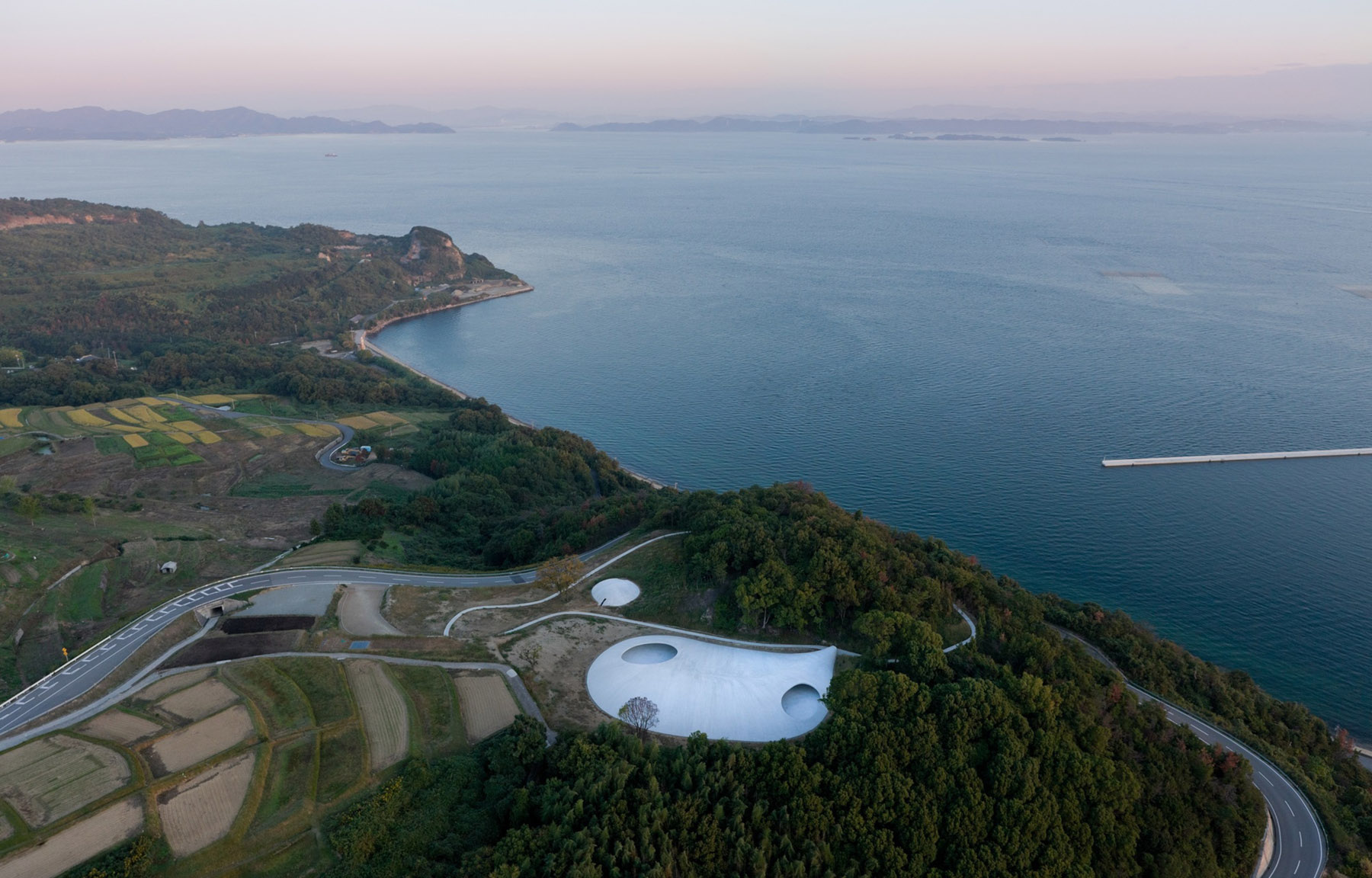
Key Highlights of Teshima:
- Teshima Art Museum: Architectural marvel inviting profound contemplation
- Natural Scenery: Breathtaking hiking trails showcasing the island’s vistas
- Cultural Immersion: Integrative experience of art within a tranquil landscape
Journeys across Teshima reveal serene trails with panoramic views, as well as quiet spots ideal for reflection amidst the splendor of nature and art.
Distinctive Mementos
Edible Delights
Kagawa Prefecture’s souvenir landscape boasts an array of edible delights, with the spotlight on the region’s renowned udon noodles. The local specialty has inspired a range of interesting keepsakes, from udon-inspired confectionery and accessories, such as key rings mimicking noodles, to the unique flavor of udon-infused sake. Additionally, artisanal olive oils from the Shodoshima Island and traditionally brewed soy sauce from Marugame are among the favored take-home treats for visitors.
Artisanal Handicrafts
The fine art of Kagawa’s handicraft tradition is reflected in an array of handcrafted items available in souvenir shops. Exquisite ceramics showcasing regional simplicity sit alongside intricate lacquerware chopsticks, a staple of Japanese craftsmanship. Those with a passion for textiles will appreciate the hand-dyed fabrics, embodying both the heritage and artisanal spirit of Kagawa’s cultural landscape. These crafts not only serve as charming souvenirs but also as tangible pieces of the prefecture’s rich artistic history.
Preparing for Your Journey
Climatic Considerations
Kagawa Prefecture typically experiences a gentle climate throughout the year. However, visitors should keep an eye on the local forecast prior to arrival. Expect a rainy period from June to mid-July and potential typhoons from late August to October. During spring, the cherry blossoms bloom but attract large numbers of tourists.
Costs of Visitation
Entrance charges are common for various attractions across Kagawa. It’s prudent to allocate funds for these expenses. Attractions often provide reduced rates for specific groups such as children, students, and the elderly. In some cases, combined tickets or promotional offers might be available, which could offer savings for those engaging in multiple activities or tours. Checking official sites for the latest information on fees could be beneficial.
Pre-Travel Checklist
- Accommodations: Confirm bookings, ideally with traveler-reviewed establishments, such as OYO.
- Health Safety: Review the latest COVID-19 guidelines and ensure destinations have safely re-opened.
- Cultural Experiences: Plan to visit traditional Japanese public baths, respecting backstage areas meant for employees only.
